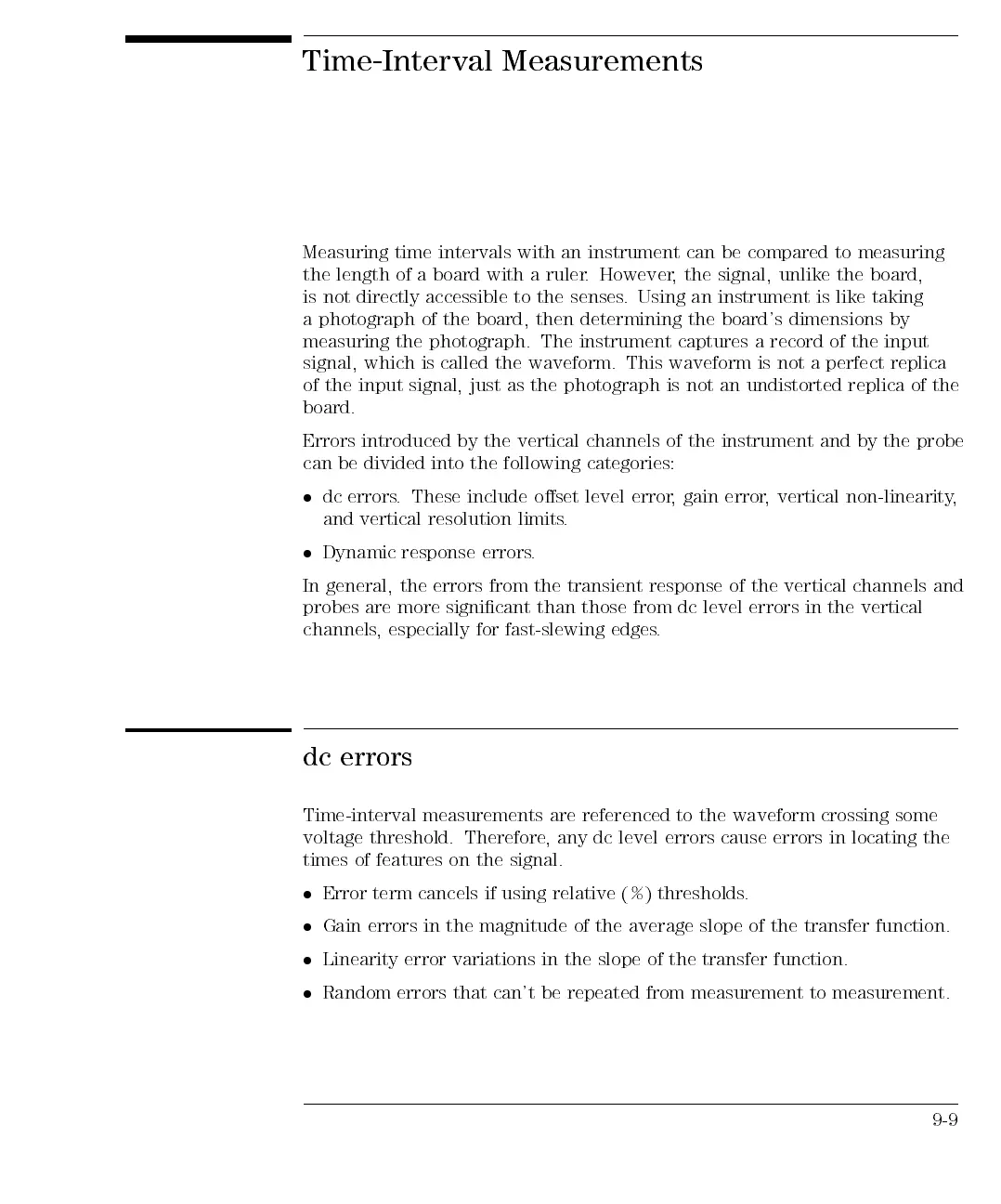Time-Interval Measurements
Measuring time intervals with an instrument can be compared to measuring
the length of a board with a ruler. However, the signal, unlike the board,
is not directly accessible to the senses. Using an instrument is like taking
a photograph of the board, then determining the board's dimensions by
measuring the photograph. The instrument captures a record of the input
signal, which is called the waveform. This waveform is not a perfect replica
of the input signal, just as the photograph is not an undistorted replica of the
board.
Errors introduced
by the
vertical channels
of the
instrument
and
by
the
probe
can be
divided into
the following
categories:
dc
errors
.
These
include
oset
level
error
,
gain error
, vertical
non-linearity
,
and
vertical
resolution
limits
.
Dynamic
response
errors
.
In
general,
the
errors
from
the
transient
response
of
the
vertical
channels
and
probes
are
more
signicant
than
those
from
dc
level
errors
in
the
vertical
channels
,
especially
for
fast-slewing
edges
.
dc
errors
Time-interval measurements are referenced to the waveform crossing some
voltage threshold. Therefore, any dc level errors cause errors in locating the
times of features on the signal.
Error
term
cancels
if
using
relative
(%)
thresholds
.
Gain
errors
in
the
magnitude of
the
average
slope
of
the
transfer
function.
Linearity error variations in the
slope of the transfer function.
Random errors that can't be repeated from measurement
to measurement.
9-9

